List of all original Apple-1.
If you are a first time visitor and not familiar with iconic Apple-1 computers, please read all the information first.
Go to previous entry #30 - Go to next entry #32
Note: This is the 31th entry in the list, and not the 31th Apple-1 produced. The Apple-1 does not have a regular serial number. Only some Apple-1 have a handwritten serial number.
 Apple-1 #31 "Copson", 1st batch, serial number 01-0022
Apple-1 #31 "Copson", 1st batch, serial number 01-0022 Apple-1 #31 "Copson", 1st batch, serial number 01-0022
Apple-1 #31 "Copson", 1st batch, serial number 01-0022 Apple-1 #31 "Copson", 1st batch, serial number 01-0022
Apple-1 #31 "Copson", 1st batch, serial number 01-0022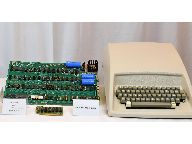 Apple-1 #31 "Copson", 1st batch, serial number 01-0022
Apple-1 #31 "Copson", 1st batch, serial number 01-0022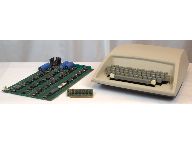 Apple-1 #31 "Copson", 1st batch, serial number 01-0022
Apple-1 #31 "Copson", 1st batch, serial number 01-0022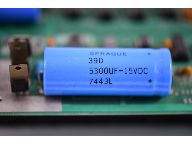 Apple-1 #31 "Copson", 1st batch, serial number 01-0022
Apple-1 #31 "Copson", 1st batch, serial number 01-0022 Apple-1 #31 "Copson", 1st batch, serial number 01-0022
Apple-1 #31 "Copson", 1st batch, serial number 01-0022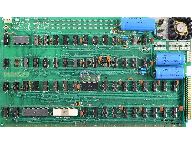 Apple-1 #31 "Copson", 1st batch, serial number 01-0022
Apple-1 #31 "Copson", 1st batch, serial number 01-0022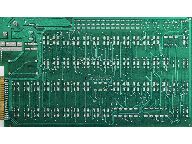 Apple-1 #31 "Copson", 1st batch, serial number 01-0022
Apple-1 #31 "Copson", 1st batch, serial number 01-0022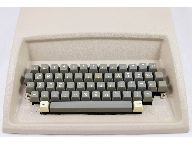 Apple-1 #31 "Copson", 1st batch, serial number 01-0022
Apple-1 #31 "Copson", 1st batch, serial number 01-0022 Apple-1 #31 "Copson", 1st batch, serial number 01-0022
Apple-1 #31 "Copson", 1st batch, serial number 01-0022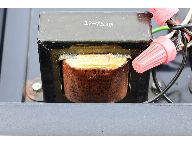 Apple-1 #31 "Copson", 1st batch, serial number 01-0022
Apple-1 #31 "Copson", 1st batch, serial number 01-0022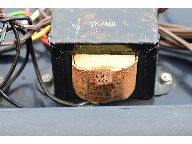 Apple-1 #31 "Copson", 1st batch, serial number 01-0022
Apple-1 #31 "Copson", 1st batch, serial number 01-0022 Apple-1 #31 "Copson", 1st batch, serial number 01-0022
Apple-1 #31 "Copson", 1st batch, serial number 01-0022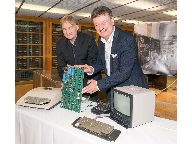 Apple-1 #31 "Copson", 1st batch, serial number 01-0022
Apple-1 #31 "Copson", 1st batch, serial number 01-0022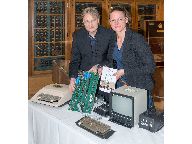 Apple-1 #31 "Copson", 1st batch, serial number 01-0022
Apple-1 #31 "Copson", 1st batch, serial number 01-0022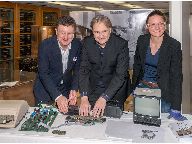 Apple-1 #31 "Copson", 1st batch, serial number 01-0022
Apple-1 #31 "Copson", 1st batch, serial number 01-0022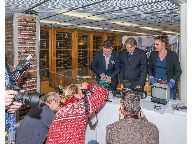 Apple-1 #31 "Copson", 1st batch, serial number 01-0022
Apple-1 #31 "Copson", 1st batch, serial number 01-0022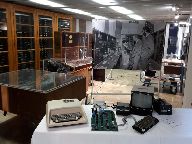 Apple-1 #31 "Copson", 1st batch, serial number 01-0022
Apple-1 #31 "Copson", 1st batch, serial number 01-0022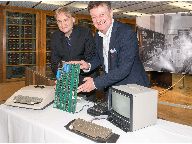 Apple-1 #31 "Copson", 1st batch, serial number 01-0022
Apple-1 #31 "Copson", 1st batch, serial number 01-0022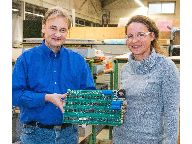 Apple-1 #31 "Copson", 1st batch, serial number 01-0022
Apple-1 #31 "Copson", 1st batch, serial number 01-0022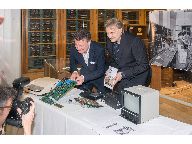 Apple-1 #31 "Copson", 1st batch, serial number 01-0022
Apple-1 #31 "Copson", 1st batch, serial number 01-0022 Apple-1 #31 "Copson", 1st batch, serial number 01-0022
Apple-1 #31 "Copson", 1st batch, serial number 01-0022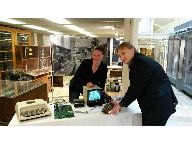 Apple-1 #31 "Copson", 1st batch, serial number 01-0022
Apple-1 #31 "Copson", 1st batch, serial number 01-0022 Apple-1 #31 "Copson", 1st batch, serial number 01-0022
Apple-1 #31 "Copson", 1st batch, serial number 01-0022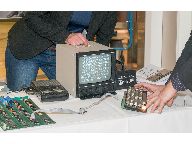 Apple-1 #31 "Copson", 1st batch, serial number 01-0022
Apple-1 #31 "Copson", 1st batch, serial number 01-0022 Apple-1 #31 "Copson", 1st batch, serial number 01-0022
Apple-1 #31 "Copson", 1st batch, serial number 01-0022 Apple-1 #31 "Copson", 1st batch, serial number 01-0022
Apple-1 #31 "Copson", 1st batch, serial number 01-0022 Apple-1 #31 "Copson", 1st batch, serial number 01-0022
Apple-1 #31 "Copson", 1st batch, serial number 01-0022 Apple-1 #31 "Copson", 1st batch, serial number 01-0022
Apple-1 #31 "Copson", 1st batch, serial number 01-0022 Apple-1 #31 "Copson", 1st batch, serial number 01-0022
Apple-1 #31 "Copson", 1st batch, serial number 01-0022 Apple-1 #31 "Copson", 1st batch, serial number 01-0022
Apple-1 #31 "Copson", 1st batch, serial number 01-0022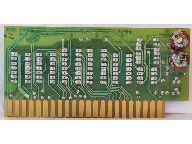 Apple-1 #31 "Copson", 1st batch, serial number 01-0022
Apple-1 #31 "Copson", 1st batch, serial number 01-0022 Apple-1 #31 "Copson", 1st batch, serial number 01-0022
Apple-1 #31 "Copson", 1st batch, serial number 01-0022 Apple-1 #31 "Copson", 1st batch, serial number 01-0022
Apple-1 #31 "Copson", 1st batch, serial number 01-0022 Apple-1 #31 "Copson", 1st batch, serial number 01-0022
Apple-1 #31 "Copson", 1st batch, serial number 01-0022 Apple-1 #31 "Copson", 1st batch, serial number 01-0022
Apple-1 #31 "Copson", 1st batch, serial number 01-0022 Apple-1 #31 "Copson", 1st batch, serial number 01-0022
Apple-1 #31 "Copson", 1st batch, serial number 01-0022 Apple-1 #31 "Copson", 1st batch, serial number 01-0022
Apple-1 #31 "Copson", 1st batch, serial number 01-0022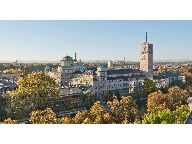 Apple-1 #31 "Copson", 1st batch, serial number 01-0022
Apple-1 #31 "Copson", 1st batch, serial number 01-0022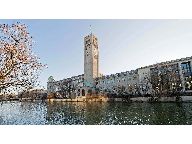 Apple-1 #31 "Copson", 1st batch, serial number 01-0022
Apple-1 #31 "Copson", 1st batch, serial number 01-0022 Apple-1 #31 "Copson", 1st batch, serial number 01-0022
Apple-1 #31 "Copson", 1st batch, serial number 01-0022 Apple-1 #31 "Copson", 1st batch, serial number 01-0022
Apple-1 #31 "Copson", 1st batch, serial number 01-0022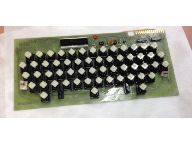 Apple-1 #31 "Copson", 1st batch, serial number 01-0022
Apple-1 #31 "Copson", 1st batch, serial number 01-0022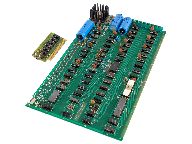 Apple-1 #31 "Copson", 1st batch, serial number 01-0022
Apple-1 #31 "Copson", 1st batch, serial number 01-0022 Apple-1 #31 "Copson", 1st batch, serial number 01-0022
Apple-1 #31 "Copson", 1st batch, serial number 01-0022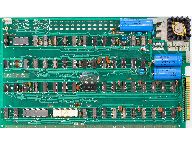 Apple-1 #31 "Copson", 1st batch, serial number 01-0022
Apple-1 #31 "Copson", 1st batch, serial number 01-0022 Apple-1 #31 "Copson", 1st batch, serial number 01-0022
Apple-1 #31 "Copson", 1st batch, serial number 01-0022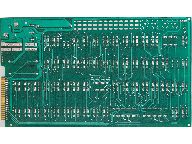 Apple-1 #31 "Copson", 1st batch, serial number 01-0022
Apple-1 #31 "Copson", 1st batch, serial number 01-0022 Apple-1 #31 "Copson", 1st batch, serial number 01-0022
Apple-1 #31 "Copson", 1st batch, serial number 01-0022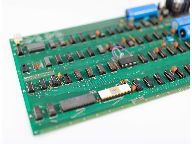 Apple-1 #31 "Copson", 1st batch, serial number 01-0022
Apple-1 #31 "Copson", 1st batch, serial number 01-0022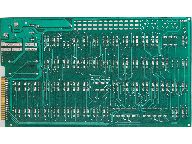 Apple-1 #31 "Copson", 1st batch, serial number 01-0022
Apple-1 #31 "Copson", 1st batch, serial number 01-0022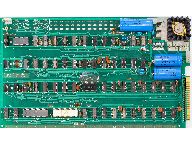 Apple-1 #31 "Copson", 1st batch, serial number 01-0022
Apple-1 #31 "Copson", 1st batch, serial number 01-0022 Apple-1 #31 "Copson", 1st batch, serial number 01-0022
Apple-1 #31 "Copson", 1st batch, serial number 01-0022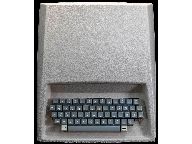 Apple-1 #31 "Copson", 1st batch, serial number 01-0022
Apple-1 #31 "Copson", 1st batch, serial number 01-0022 Apple-1 #31 "Copson", 1st batch, serial number 01-0022
Apple-1 #31 "Copson", 1st batch, serial number 01-0022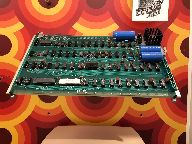 Apple-1 #31 "Copson", 1st batch, serial number 01-0022
Apple-1 #31 "Copson", 1st batch, serial number 01-0022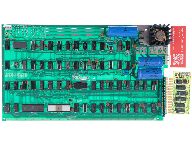
 Achim Baqué
Achim BaquéThe serial number on the back of the Apple-1 was most likely written by Steve Jobs. According to available information, a forensic analysis has not yet been performed for this Apple-1. However, for some other Apple-1s with a serial number on the back, it has been confirmed that it is Steve Jobs' handwriting. More information.
Apple-1 at Deutsches Museum Munich
TheApple-1.com (owner website)
The case of the Copson Apple-1 is unique. It looks like a clam shell. The case is from 1976 with the original Datanetics ASCII keyboard dated June 2, 1976. The clam shell size is 13.25 by 16.6 by 5 inches — approximately 34 x 42 x 13 cm. Truly a hobby work and full of retro charm. The mainboard and power supply fit into the case together with the Datanetics keyboard.
Handwritten number 01-0022 and a round stamp with number 7 in the middle are on the back.
First owner was Joe Copson, a former employee of Apple. Joe Copson was the programmer of Star Raiders for Atari 5200. Some call it the second most important game of all time. The Copson Apple-1 is definitely one of the very first examples.
Joey Copson (California, USA) bought the Apple-1 directly from the Byte Shop in San Jose. The Byte Shop was a young computer shop and the first to offer the Apple-1 computer. The first 50 Apple-1s were sold there.
When Apple Computer offered owners of the Apple-1 an exchange for an Apple II in 1977, Joey Copson said, "No. I'm not going to. I don't care, I'm keeping the Apple-1." A stroke of luck, as many Apple-1s ended up scrapped, except for specimens that employees were allowed to take with them as souvenirs.
Joey Copson had been storing the Apple-1 in his mother's closet all these years.
Copson served in the Vietnam War before he joined Apple Computer and died on March 5, 2003.
Bob Luther, the author of *The First Apple*, bought the computer after Joe Copson died from his brother. In 2015, the rare specimen changed hands for the last time at an auction. Achim Baqué from Germany was the winner. In 2017, he lent the Copson Apple-1 to the Deutsches Museum in Munich. The Apple-1 was provided free of charge for the exhibition; even transport and other costs were paid by the owner. Early 2022, the museum closed the exhibition, but the Apple-1 is on display again in the electronics department. In the meantime, the Apple-1 was taken by the owner for photos for a few weeks and then brought back to the museum.
Apr. 2015
(see History for more information)
White ceramic MOS MCS 6502 CPU (1576), plastic AMI S6820 PIA (7601), 8 KB plastic RAM, all blue capacitors, original components.
Original Apple Cassette Interface, unique clam-shell case, 1976 Datanetics keyboard, monitor, cassette recorder, original Apple Cassette Interface Manual.
very good
Lent to Deutsches Museum Munich in Germany. Since Nov. 2017 on display.
Press conference at Deutsches Museum Munich.
Bob Luther talks about the Copson Apple-1 and how he met the new owner Achim Baqué.
Corey Cohen speaks about the Copson Apple-1 as it goes on display at Deutsche Museum Munich in December 2017.
On November 13, 2017 Press conference Copson Apple-1 in front of historic Zuse computer. From left to right: Director Wolfgang M. Heckl, lender Achim Baqué, curator Anja Teuner.
Bob Luther speaks about Ron Wayne and Daniel Kottke. In 2015, the Apple-1 was handed over to Achim Baqué by Bob Luther.
Bob Luther talks about the Copson Apple 1 computer.
Demonstration
Test run of the Apple-1 at the Deutsches Museum
Before you click on video links, make sure you have read and accepted the disclaimer regarding YouTube links, in accordance with the European Data Protection Law (2016/679).
Book The First Apple from Bob Luther. You can read about the Copson Apple-1 in this book.
Press release Deutsches Museum Munich (German language, PDF Viewer needed). With kind permission of Deutsches Museum Munich.
Story by current owner
TRANSFER TO GERMANY
The Apple-1 was picked up by me directly from Bob Luther in Alexandria/Virginia. Bob took me to the airport to clarify some details. I had already asked the airline and airport security if there were any objections for the computer and the monitor being to be carried along.
Security at Dulles Airport was no surprise. Everything went very nicely and professionally.
Months before the handover, I had already asked the customs authorities and talked to a very nice lady from Berlin, who is often entrusted with rare collector's items.
According to her, the customs authorities had issued a document on behalf of the European Union on July 3rd, 2015.
Quote: The commodity [sic] is to be classified as a "collector's item of historical/technological value". (Reason for sic: The Copson Apple-1 is called like this by them and subsequently referred to this name on the document)
After landing in Frankfurt, no one was at the gates from customs, that could only be contacted by telephone. I was picked up and asked casually whether the way was worthwhile and if the object to be imported was worth more than 1,000€.
I had to pay the import sales tax in cash. The customs officers were helpful and understanding. It was clear that I didn't want to leave the device at the customs office to come back to Frankfurt later. It took a while and some paperwork had to be done. After a few hours on site, I was able to take the Apple-1 with me.
I was allowed to transfer the money, but the computer had to be sealed in a transport case. It would have been strange if someone had volunteered to declare something for customs clearance and then refused to pay. This seal was only allowed to be removed after written confirmation of the receipt of the money by customs.
The computer was correctly introduced and the import sales tax was paid.
In the Cologne area, I got hold of the last available locker in the appropriate size.
On November 8th, 2017, the Copson Apple-1 was freed from its dark prison in a Cologne bank and, on November 13th, it made its last trip to the German Museum in Munich.
There are no plans for how long the computer will stay in the museum, but it should be a few years.
EXHIBITION AT DEUTSCHES MUSEUM MUNICH
Shortly after the purchase, the idea to hand the Apple-1 over to a museum for exhibition came about. For the time being, the Apple-1 disappeared like so many other devices in a bank safe.
I felt that many computer enthusiasts, not only fans of the Apple brand, would like to see an original Apple-1. In Germany, this was previously only possible in one museum. There are many good replicas nowadays, but, as with all historical objects, it is different to stand in front of a replica. Authenticity simply inspires.
Not only for collectors, but also for many technically interested people, Apple-1 is considered the Holy Grail when it comes to microcomputers.
In 2015, I wrote to the Deutsches Museum in Munich and offered the Apple-1 as a free of charge loan to the exhibition.
The Deutsches Museum was my first choice, although there were many other museums, mainly from the USA. The German Museum Munich is the world's largest natural science museum. As a teenager, I often stayed with my grandmother in the beautiful city of Munich for a few weeks and visited the Deutsches Museum again and again. The museum is a paradise for all technology enthusiasts. This youthful enthusiasm for the museum and the high number of visitors was ultimately decisive.
I am pleased that a large number of visitors can now see a very beautiful computer with one of the most unusual cases from 1976.
The handover took place on 14th November 2017 with the Zuse 4 in the background. This is exactly where Steve Jobs personally handed over a Macintosh to the museum in 1985.
From December 2017 on, the Apple-1 will be permanently on display in the Microelectronics Department.
Why the German Museum in Munich? There were some museums interested in the Apple-1. The Deutsches Museum Munch is not only the largest technical museum, but it has impressed me since my childhood. My grandmother owned a house in the English Garden and I used to go from there to the museum. A little nostalgia and childhood memories played a role.
Jul 29, 2025
Mar 21, 2018: Video link(s). Description of picture(s)/video(s). 5 Video(s) added.
Mar 23, 2018: Video link(s). 2 video(s) added. Website(s).
Mar 31, 2018: 1 picture(s) deleted
Apr 11, 2018: 2 picture(s) added
Jun 10, 2018: Video link(s)
Jun 21, 2018: History
Dec 07, 2018: Auctions added
May 27, 2019: Verification info
May 27, 2019: Number/Sticker/Stamp info
May 28, 2019: Website(s). Museum's website added
Jun 18, 2019: Video link(s)
Jun 18, 2019: 14 picture(s) added
Jun 25, 2019: Website(s)
Jun 25, 2019: Video link(s)
Jun 13, 2021: Description of picture(s)/video(s)
Jun 20, 2021: 3 picture(s) deleted
Nov 01, 2021: Website(s)
Nov 16, 2021: Component detail added
Nov 16, 2021: Working condition
Nov 16, 2021: Serial number. Labels / stamps added
Mar 12, 2022: 4 picture(s) added
Mar 12, 2022: History
Mar 14, 2022: Description
Apr 16, 2022: 5 picture(s) added
Apr 16, 2022: 4 picture(s) added
Aug 18, 2022: 2 picture(s) added
Jul 29, 2025: Equipment. Description. History
We appreciate your help:
Please spread the word about the Apple-1 Registry by adding a link to your social media account and/or website. Contact us if you have new information about any Apple-1 or Apple-1 (parts) for sale.
You can link to the Apple-1 Registry. Any form of reprint or reproduction (including excerpts) is only allowed with written permission from the Apple-1 Registry.
Here you will find press releases and images free to use under CC BY-SA 4.0.